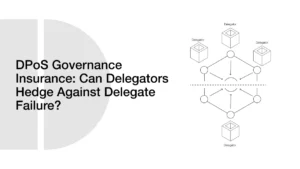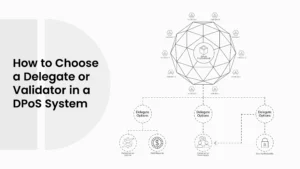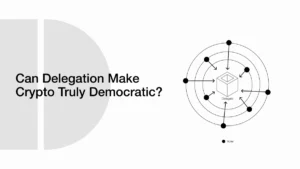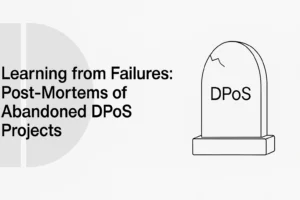Why Some DPoS Chains Thrive While Others Fade Away
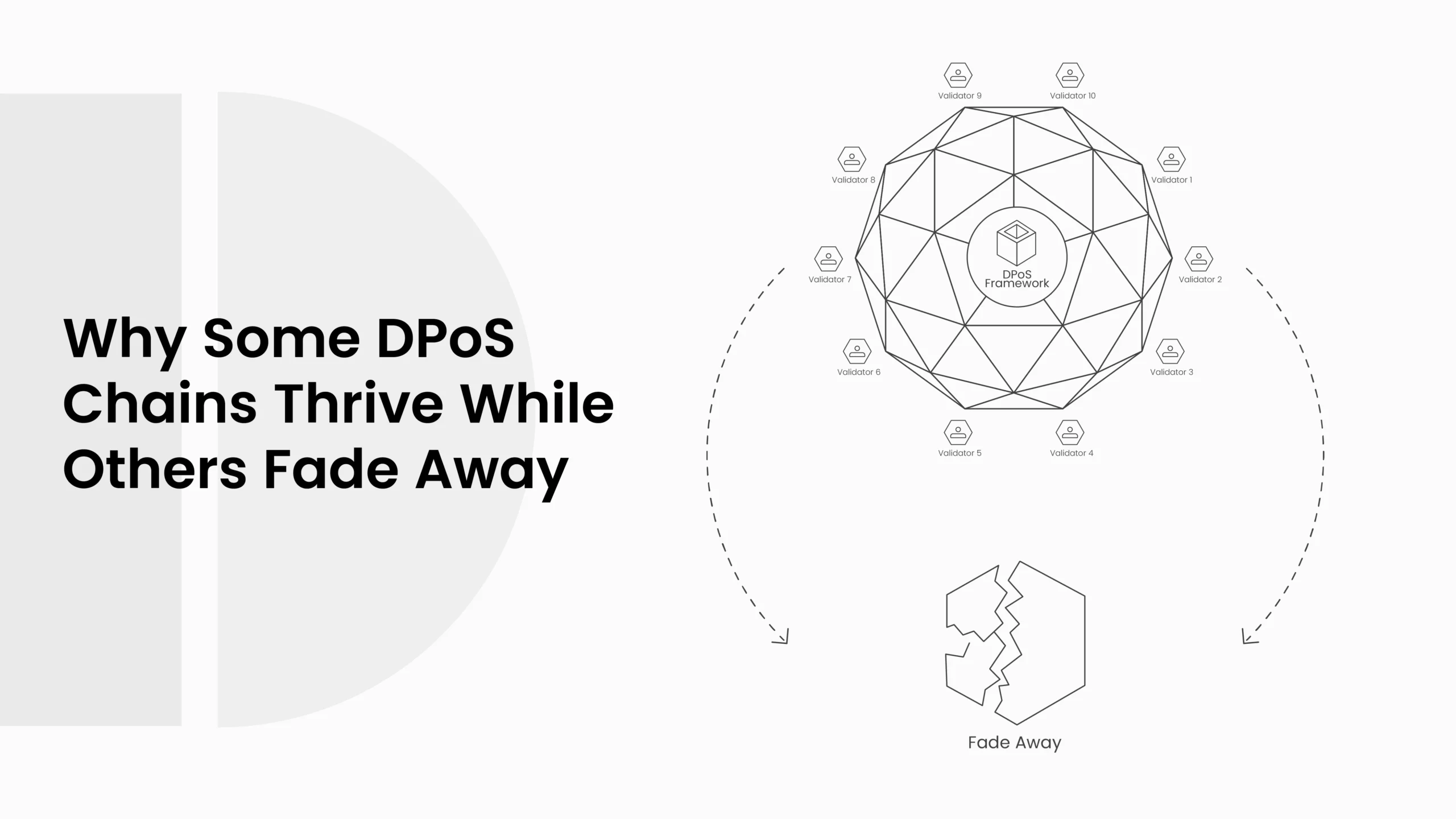
Delegated Proof of Stake, also called DPoS, is one of the most popular ways to run a blockchain. It was made to give faster speed and lower cost compared to Proof of Work. In DPoS, people who hold tokens can vote for special members called block producers. These producers create blocks and keep the chain moving. In return, they get rewards.
- What Makes a DPoS Chain Successful?
- Community Participation in Voting
- Decentralization and Distribution of Power
- Economic Incentives for Validators and Voters
- Why Do Some DPoS Chains Fail?
- Low Voter Engagement
- Collusion and Vote Buying
- Over-Centralization of Block Producers
- Case Studies: DPoS Chains That Thrived vs Faded
- EOSIO: Growth and Challenges
- Tron: Community Growth and Entertainment Ecosystem
- Binance Smart Chain: Centralized Yet Thriving
- Comparing EOSIO, Tron, and Binance Smart Chain
- The Role of Governance in DPoS Survival
- Transparent Election Rules
- Proxy Voting and Risks
- Adaptability to Network Growth
- Voting Rules and Participation in Major DPoS Chains
- How Economic Models Decide the Future of DPoS Chains
- Reward Distribution
- Inflation and Token Value
- Costs of Running a Node
- Incentive Structures in Successful vs Failed DPoS Chains
- Challenges Ahead for DPoS
- Security Risks and Attacks
- Competing With PoS and Other Models
- Regulatory and Market Pressure
- Key Risks vs Responses in DPoS vs PoS
- Future of DPoS: Can It Still Thrive?
- Stronger Governance
- Educating the Community
- New Use Cases
- Balance Between Speed and Fairness
- Frequently Asked Questions About Why Some DPoS Chains Thrive
- What is DPoS, and how is it different from PoS?
- Why do some DPoS blockchains fail?
- Which are the most successful DPoS chains today?
- Is DPoS better than PoW for speed?
- Can DPoS survive in a multi-chain future?
- Glossary of Key Terms
The idea sounds strong. The community votes, the producers work, and the system stays fair. But in real life, not all DPoS chains grow the same. Some chains become big, like Tron and Binance Smart Chain. Some others slow down or even fade away, like parts of EOSIO. Why does this happen? Why do some thrive while others fail?
Researchers have studied this topic deeply. A study on EOSIO by Liu and team looked at more than 135 million blocks and found that decentralization changes over time. They also showed how abnormal voting and collusion can hurt the system (Liu, Zheng, Lu, Wu, & Zheng, 2022). This means the health of a DPoS chain depends not only on speed but also on governance and fairness.
ALSO READ: How Yield Wars Between Validators Distort DPoS Ecosystems
What Makes a DPoS Chain Successful?
Community Participation in Voting
One of the most important things for a DPoS chain is voter turnout. If many token holders vote, the system stays alive and fair. High participation means more voices, less chance for big whales to control.
EOSIO showed that only about 4.87% of stakeholders took part in voting during the early years (Liu et al., 2022). That is a small number compared to total holders. When so few people vote, a few groups can take power. On the other hand, when more users join in, producers rotate more, and trust in the chain grows.
A strong voting culture is the heart of DPoS. Chains like Tron did well because they made voting simple and linked it to community benefits. If voting is easy and comes with rewards, people take part more.
Decentralization and Distribution of Power
Another key factor is how well power is spread among block producers. If only a few producers control most of the chain, it becomes weak. Attackers can target them. Users lose trust.
A DPoS system thrives when block producers change often and no single group holds too much control. In EOSIO, over time, the same producers stayed on top, and decentralization dropped. This trend reduced fairness and pushed some users away (Liu et al., 2022).
Chains that want to survive must find ways to refresh their producer set. This keeps the network balanced. It also makes sure rewards reach many people, not just a few.
Economic Incentives for Validators and Voters
Money matters a lot in blockchain. The way rewards are shared can make or break a DPoS chain. If producers get most of the income and voters see nothing, then voters lose interest.
Some systems share rewards with voters, making them feel part of the chain. This keeps participation high. When voters know that their vote earns them rewards, they stay active.
Also, inflation and token value are linked. If rewards cause too much inflation, the token price falls. If rewards are too low, producers stop running nodes. A good balance helps the system stay strong.
In short, chains that succeed are the ones that manage voter participation, fair distribution of power, and good incentives together.
Why Do Some DPoS Chains Fail?
Low Voter Engagement
One of the biggest problems is when people do not vote. Many token holders only buy tokens for speculation. They hold but never join governance. This leaves decisions to a very small group.
In EOSIO, research showed that the majority of token holders did not take part in elections (Liu et al., 2022). This made it easy for a few whales and proxies to dominate. A DPoS system without active voters slowly becomes weak.
When voter engagement falls, producers have no reason to change or improve. The same names stay in power, and the chain loses its community spirit.
Collusion and Vote Buying
Another reason for failure is collusion. Sometimes producers form hidden groups and support each other. They trade votes, or even buy votes from large token holders.
The EOSIO study found patterns of abnormal voting. This included clusters of accounts voting in the same way, which hinted at collusion. Such behavior hurts trust.
When users think the election is unfair, they stop caring. New validators cannot enter the system. Slowly, decentralization is lost, and the chain turns into an oligopoly.
Over-Centralization of Block Producers
In many failed chains, the same block producers stayed on top for a very long time. They became too powerful. This reduced the spirit of decentralization and made the system easy to attack.
Unlike PoW, where mining power is more spread, DPoS can easily fall into centralization if voter turnout is low. If the top 20 producers never change, the system stops being democratic.
Over-centralization also reduces innovation. Producers who are sure they will not lose their spot have no push to improve. This makes the network slow and less attractive compared to rivals.
In the end, low engagement, collusion, and centralization are the main reasons why some DPoS chains fade away.
ALSO READ: Token Concentration and Power in DPoS: Can Whales Dictate Validator Outcomes?
Case Studies: DPoS Chains That Thrived vs Faded
EOSIO: Growth and Challenges
EOSIO was one of the first big blockchains to use DPoS. It launched with big promises. It gave very fast transactions, almost zero fees, and support for large-scale apps. Many called it blockchain 3.0 at that time. In the start, EOSIO grew fast. Billions of transactions were processed. Developers made games, tools, and financial apps on it.
But after the early success, problems started to show. The same block producers stayed in power again and again. The voting process became controlled by a few groups. Research found that only a very small number of token holders actually voted in elections. This reduced decentralization.
Collusion and vote buying were also reported. Big stakeholders and proxies held more power. Slowly, the system looked less open and more centralized. This led to a loss of trust from the community. Many developers moved away.
EOSIO teaches us that high speed alone is not enough. If decentralization weakens, people stop believing in the chain.
Tron: Community Growth and Entertainment Ecosystem
Tron is another big DPoS blockchain. But unlike EOSIO, it found a way to keep people engaged. Tron built its brand around entertainment, gaming, and DeFi. It focused on bringing users from Asia and other parts of the world into its ecosystem.
One of the strong points of Tron was voter rewards. Voters could share in the earnings from producers. This gave them a reason to stay active in elections. Even if decentralization was not perfect, the community stayed alive because people had incentives to join.
Tron also pushed many apps, like USDT transactions, gaming, and NFTs. This kept daily activity high. People used the chain not just for speculation but for real apps. This is one reason why Tron continues to thrive, even when other DPoS chains fade.
Binance Smart Chain: Centralized Yet Thriving
Binance Smart Chain (BSC) is a special case. Many experts say it is very centralized because Binance has a lot of control. Only a small number of block producers run the system.
But still, BSC is one of the most used blockchains today. Why? Because it has the full support of Binance, one of the largest crypto exchanges in the world. This gave it a huge user base, liquidity, and trust in its early days.
Developers loved BSC because it was easy to use, fast, and cheap compared to Ethereum. Even if centralization was a concern, users kept using it. This shows that sometimes a strong ecosystem backing can help a DPoS chain survive, even if governance is weaker.
Comparing EOSIO, Tron, and Binance Smart Chain
| Feature | EOSIO | Tron | Binance Smart Chain |
| Launch Year | 2018 | 2017 | 2020 |
| Transaction Speed | ~0.5 sec per block | ~3 sec per block | ~3 sec per block |
| Main Strength | Fast + zero fees | Community + DApps | Backed by Binance |
| Voting Participation | Very low (~5% holders voted) | Higher due to voter rewards | Controlled, few producers |
| Decentralization Trend | Declined over time | Mixed but more active users | Very centralized |
| Outcome | Lost community trust | Still growing in usage | Thriving despite centralization |
EOSIO shows the risk of centralization. Tron shows the power of incentives and community. Binance Smart Chain shows that strong backing can keep a system alive even when decentralization is weak. Together, these cases explain why some DPoS blockchains thrive while others fade.
The Role of Governance in DPoS Survival
Governance is the set of rules that keep a DPoS chain fair. If the rules are clear and transparent, then people trust the process. If the rules are weak or can be abused, then the chain slowly loses value. Many chains that fail usually have poor governance.
Transparent Election Rules
A healthy DPoS chain needs fair election rules. Token holders must know how votes are counted, how often producers change, and what checks exist to stop manipulation. If these things are hidden or complex, normal users lose interest.
For example, EOSIO gave power to the top 21 producers. In theory, it was democratic, but in practice, the same names stayed on top. People began to believe the process was not transparent anymore. This weak governance hurt EOSIO in the long run.
Other parts of the crypto industry are also working on transparency. For example, MEXC exchange launched a Proof of Trust campaign to improve user protection and raise transparency standards (CoinDesk, 2025). This shows that both blockchains and exchanges are facing pressure to prove fairness and accountability.
Proxy Voting and Risks
Proxy voting is another part of governance. It allows people to give their voting power to a proxy who votes on their behalf. On one hand, it helps people who do not have time to vote often. On the other hand, it can lead to the concentration of power.
In EOSIO, proxies gained more and more control over time. Research showed that proxies held a growing share of voting weight, which reduced real decentralization. This means that even if many users were in the system, only a few proxies actually controlled the election.
Proxy voting can be useful if managed well, but if it becomes too strong, it creates hidden centralization.
Adaptability to Network Growth
Another part of governance is adaptability. DPoS chains need to change rules as the network grows. If rules are too rigid, the system becomes outdated. Successful chains are the ones that adapt quickly, adding new governance tools, better transparency, and fairer reward models.
For example, Tron kept voter interest by adapting its reward system. Binance Smart Chain was adapted by adding more use cases and bridging with Ethereum apps. These small adjustments kept their governance alive and relevant.
ALSO READ: DPoS as an Economic Laboratory: Incentives, Rewards, and Risks
Voting Rules and Participation in Major DPoS Chains
| Chain | Voting Style | Proxy Voting Allowed | Average Participation | Governance Transparency |
| EOSIO | Top 21 producers elected | Yes | Very low (~5%) | Declined over time |
| Tron | Super Representative election | Yes | Higher, due to rewards | Moderate, with incentives |
| Binance Smart Chain | Validator set controlled, limited | No (mostly internal) | Low, centralized | Low, but backed by Binance |
This table shows the difference clearly. EOSIO had rules, but participation was low. Tron used incentives to keep people active. BSC had weak decentralization but survived with strong ecosystem support. Governance is the bridge between technology and community. If the bridge breaks, the chain cannot stand for long.
How Economic Models Decide the Future of DPoS Chains
Economics is at the center of every blockchain. No matter how fast or how secure, a chain will not last if the rewards and costs are broken. In DPoS, the design of incentives decides if people want to stay active or if they leave the system.
Reward Distribution
The way rewards are shared between block producers and voters is very important. If producers keep everything, voters have no reason to join. Low voter interest leads to centralization. On the other side, if voters get a fair share, they keep voting, and the chain stays alive.
Tron is a good example. It offered voters rewards for supporting super representatives. This simple design kept participation higher. EOSIO, by contrast, saw weaker voter rewards, which reduced turnout.
Inflation and Token Value
Another part is inflation. Many chains pay rewards by printing more tokens. If too many tokens are created, the value of the coin drops. People lose trust. If rewards are too low, producers cannot cover their costs. So the system must balance inflation with token stability.
Chains that survive usually tie inflation to long-term growth. If inflation is controlled and tied to real usage, the token value stays healthy.
Costs of Running a Node
Running a validator or block producer is not free. Hardware, internet, and security all cost money. If rewards do not cover costs, small validators leave. This leaves only big players who can afford it, making the system more centralized.
A sustainable DPoS chain must make sure that the cost of running a node is balanced with fair income. Otherwise, the system becomes fragile and dependent on only a few producers.
Incentive Structures in Successful vs Failed DPoS Chains
| Factor | Successful Chains (e.g., Tron, BSC) | Failing Chains (e.g., EOSIO in later years) |
| Reward Sharing | Shared between voters + producers | Mostly producers, low voter rewards |
| Inflation Policy | Controlled, linked to growth | High inflation, weak link to real usage |
| Token Value Impact | Stable or growing demand | Falling prices due to weak economics |
| Node Costs vs Rewards | Balanced, producers can cover expenses | Too high, smaller validators leave |
| Community Incentives | Strong, keeps voters engaged | Weak, low turnout in elections |
The table shows that economics is not just about money, but also about fairness. Successful chains reward both producers and voters. They keep inflation in check and make sure the token value is stable. Failed chains often ignore voters, push too much inflation, and lose smaller validators.
When the economy is broken, decentralization slowly disappears. When the economics are balanced, the chain can thrive for years.
Challenges Ahead for DPoS
Even if some DPoS chains are still strong today, they face many big challenges. These challenges decide if they will keep growing or slowly fade away.
Security Risks and Attacks
One of the main risks is security. DPoS was made to be fast, but when only a few block producers control the chain, it is easier to attack. If a small group controls most votes, they can change the system. In extreme cases, it can lead to attacks like 51% control.
Also, when voter engagement is low, attackers can buy votes or collude with proxies. This makes the system even weaker. So, speed comes with a trade-off in security.
Competing With PoS and Other Models
Another challenge is competition. Proof of Stake (PoS) and other new models like hybrid consensus are rising. Ethereum already moved to PoS and is attracting developers. Compared to PoS, DPoS sometimes looks too centralized. This makes it harder for new projects to choose DPoS unless it gives special advantages.
If DPoS cannot compete on fairness and security, many may choose PoS instead.
Regulatory and Market Pressure
Governments are also starting to watch blockchain governance. If regulators see that only a few players control the system, they may not accept it as decentralized. This could create more legal risks for DPoS chains.
At the same time, market trust also plays a big role. If people see collusion, unfair rewards, or weak decentralization, they lose confidence. Once the market loses faith, it is very hard for a DPoS chain to recover.
Key Risks vs Responses in DPoS vs PoS
| Risk Factor | DPoS Response | PoS Response |
| 51% Attack | Easier if voter turnout is low | Harder, more validators spread out |
| Vote Buying / Collusion | Common risk with proxies and big whales | Less common but still possible |
| Decentralization Trend | Can decline fast if same producers stay long | More balanced with staking pools |
| Scalability | Very high, fast block production | Good but slower compared to DPoS |
| Regulatory Pressure | Higher, seen as oligopoly in some cases | Lower, more spread-out participation |
This table shows clearly that DPoS trades decentralization for speed. It gives high throughput but faces higher risks of collusion and centralization. PoS spreads power more widely but usually runs more slowly. Both models face pressure, but DPoS must solve these problems if it wants to survive in the long run.
ALSO READ: Sustainability of DPoS in a Multi-Chain Future: Will DPoS Scale or Fade?
Future of DPoS: Can It Still Thrive?
The big question is whether Delegated Proof of Stake (DPoS) has a real future or if it will fade as other models like PoS dominate. The answer depends on how DPoS chains change over the next few years.
Stronger Governance
The first step is better governance. Without fair elections and transparent rules, no DPoS chain can stay alive for long. Chains that add stronger systems to track voting and stop collusion will do better. Some researchers suggest using more data analysis and on-chain monitoring to catch abnormal voting.
Educating the Community
Many token holders do not vote simply because they do not understand or do not care. This problem can be fixed with better education. If chains teach people why voting matters and also reward them fairly, turnout will rise. This can bring back real decentralization.
New Use Cases
DPoS must also find fresh use cases. Speed and low cost are its main strengths. These are useful in areas like gaming, NFTs, and DeFi. If DPoS chains focus on these industries, they can still grow. Projects that use fast throughput for real-world apps may give DPoS new life.
Balance Between Speed and Fairness
Finally, the long-term survival of DPoS depends on balance. Speed is good, but fairness is better for trust. If chains find ways to keep high throughput while also improving decentralization, they can thrive. Without this balance, more users will move to PoS and other models.
Frequently Asked Questions About Why Some DPoS Chains Thrive
What is DPoS, and how is it different from PoS?
DPoS means Delegated Proof of Stake. Token holders vote for a small set of block producers. PoS means Proof of Stake, where many validators join directly. DPoS is faster, but PoS is usually more decentralized.
Why do some DPoS blockchains fail?
They fail when voter turnout is too low, when collusion happens, or when the same block producers stay in power for too long. This makes the system less fair.
Which are the most successful DPoS chains today?
Tron and Binance Smart Chain are two strong examples. EOSIO was strong once but lost trust over time.
Is DPoS better than PoW for speed?
Yes. DPoS is much faster than Proof of Work. EOSIO could process thousands of transactions per second compared to Bitcoin’s few transactions per second.
Can DPoS survive in a multi-chain future?
Yes, but only if it adapts. It must improve governance, keep voter participation high, and focus on industries that need speed like gaming and DeFi.
Glossary of Key Terms
- DPoS (Delegated Proof of Stake): A consensus model where token holders vote for block producers.
- Block Producer: A node elected to create blocks and validate transactions.
- Voting Proxy: An account that votes on behalf of many token holders.
- Collusion: When block producers or voters secretly cooperate for unfair benefit.
- Throughput: The number of transactions a blockchain can process in a short time.

